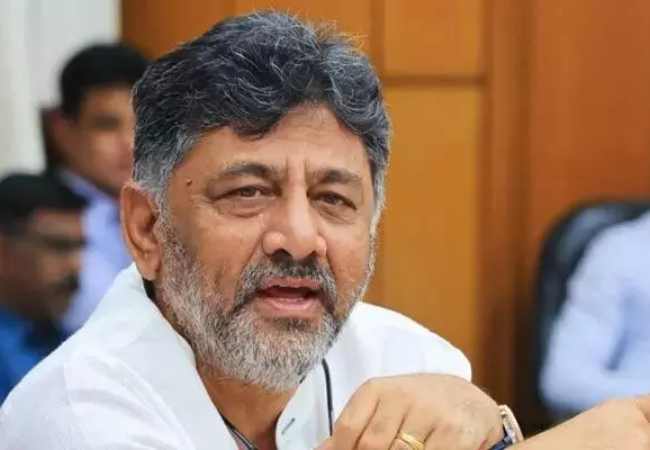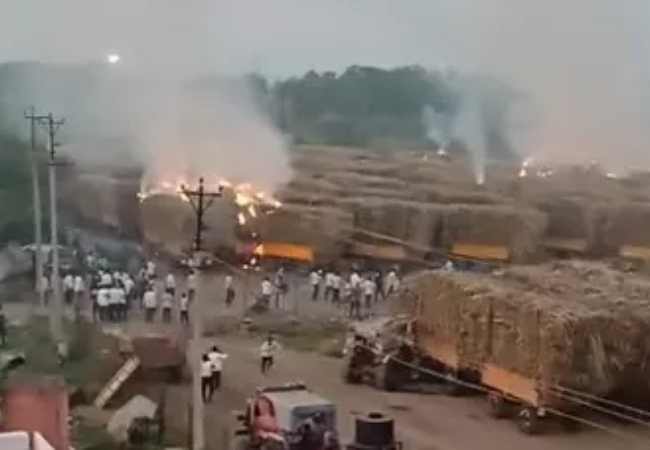New Delhi, June 7: The quad comprising India, the US, Japan and Australia met in Singapore on Thursday and reiterated their call for a free and prosperous Indo-Pacific and to promote a rules-based order in the region.
According to an External Affairs Ministry statement here, foreign ministry officials of the four countries met on the sidelines of Association of Southeast Asian Nations (Asean) Senior Officials Meeting in the southeast Asian city state.
It said the four nations considered ways to pursue shared objectives in the areas of connectivity and development, regional security, including counter-terrorism and non-proliferation, humanitarian assistance, disaster relief and maritime cooperation.
The Indian side, which was represented at the Joint Secretary-level, highlighted India's vision for the Indo-Pacific Region as outlined in Prime Minister Narendra Modi's keynote address at the Shangri-La Dialogue in Singapore earlier this month.
In his speech on June 1, Modi said that India's vision for the Indo-Pacific region is that of a free, open and inclusive region that embraces all in a common pursuit of progress and prosperity.
"India does not see the Indo-Pacific region as a strategy or as a club of limited members," Modi said while delivering the keynote address at the Shangri-La Dialogue, the Track I annual inter-governmental security forum organised by the International Institute of Strategic Studies (IISS) think tank.
According to the External Affairs Ministry statement, in Thursday's meeting of the quad that was revived on the sidelines of the Asean Summit in the Philippines in November last year, the participants reaffirmed their support for a free, open, prosperous and inclusive Indo-Pacific region.
"They also confirmed their common commitment, based on shared values and principles, to promote a rules-based order in the Indo-Pacific," the statement said.
"The participants reaffirmed their strong support for Asean centrality and Asean-led mechanisms in the regional architecture for the Indo-Pacific," it stated.
"They agreed to partner with all countries and institutions in the region to promote the shared vision of a peaceful, secure and prosperous Indo-Pacific, including through such plurilateral formats."
The quad's views reflect New Delhi's stand that the 10-nation Asean regional bloc is central to peace and prosperity of the Indo-Pacific region.
The idea is for the four countries to promote free trade and defence cooperation across a stretch of ocean from the South China Sea, the Indian Ocean and all the way to Africa.
The emerging quadrilateral is seen to counter China's aggressive maritime expansion under its Belt and Road Initiative. China's plans would cement a sphere of influence for Beijing well beyond Asia.
During French President Emmanuel Macron's visit to India in March this year, both sides announced a broadbasing of their ties through a joint strategic vision for cooperation in the region that agreed on the need to establish an open, inclusive and transparent cooperation architecture for peace, security and prosperity there.
Though France is not against the quad of India, the US, Japan and Australia, Paris would rather like to work with New Delhi bilaterally in the Indian Ocean Region given that there are around two million French citizens in its territories in the region.
Thursday's meeting in Singapore came ahead of Modi's bilateral summit with Chinese President Xi Jinping in Qingdao, China, on June 9 on the margins of this year's Shanghai Cooperation Organisation (SCO) Summit.
Let the Truth be known. If you read VB and like VB, please be a VB Supporter and Help us deliver the Truth to one and all.
Bengaluru (PTI): Karnataka has proposed a new Information Technology Policy for 2025–2030, offering extensive financial and non-financial incentives aimed at accelerating investments, strengthening innovation and expanding the state's tech footprint beyond Bengaluru.
The Karnataka Cabinet gave its nod to the policy 2025–2030 with an outlay of Rs 445.50 crore on Thursday after the Finance Department accorded its approval.
The policy introduces 16 incentives across five enabler categories, nine of which are entirely new, with a distinctive push to support companies setting up or expanding in emerging cities.
Alongside financial support, the government is also offering labour-law relaxations, round-the-clock operational permissions and industry-ready human capital programmes to make Karnataka a globally competitive 'AI-native' destination.
According to the policy, units located outside Bengaluru will gain access to a wide suite of benefits, including research and development and IP creation incentives, internship reimbursements, talent relocation support and recruitment assistance.
The benefits also include EPF reimbursement, faculty development support, rental assistance, certification subsidies, electricity tariff rebates, property tax reimbursement, telecom infrastructure support, and assistance for events and conferences.
Bengaluru Urban will receive a focused set of six research and development and talent-oriented incentives, while Indian Global Capability Centres (GCCs) operating in the state will be brought under the incentive net.
Incentive caps and eligibility thresholds have been raised, and the policy prioritises growth-focused investments for both new and expanding units.
Beyond incentives, the government focuses on infrastructure and innovation interventions.
A flagship proposal in the policy is the creation of Techniverse -- integrated, technology-enabled enclaves developed through a public-private partnership model inside future Global Innovation Districts.
These campuses will offer plug-and-play facilities, artificial intelligence and machine learning and cybersecurity labs, advanced testbeds, experience centres, and disaster-resistant command centres.
There will also be a Statewide Digital Hub Grid and a Global Test Bed Infrastructure Network, linking public and private research and development, and innovation facilities across Karnataka.
The government has proposed a Women Global Tech Missions Fellowship for 1,000 mid-career women technologists, an IT Talent Return Programme to absorb experienced professionals returning from abroad, and broad-based skill and faculty development reimbursements.
Shared corporate transport routes in Bengaluru and tier-two cities will be designed with Bengaluru Metropolitan Transport Corporation and other transport entities to support worker mobility.
The government said the policy is the outcome of an extensive research and consultation process involving TCS, Infosys, Wipro, IBM, HCL, Tech Mahindra, Cognizant, HP, Google, Accenture and NASSCOM, along with sector experts and stakeholder groups.
It estimates an outlay of Rs 967.12 crore over five years, comprising Rs 754.62 crore for incentives and Rs 212.50 crore for interventions such as Techniverse campuses, digital grid development, global outreach missions and talent programmes.





